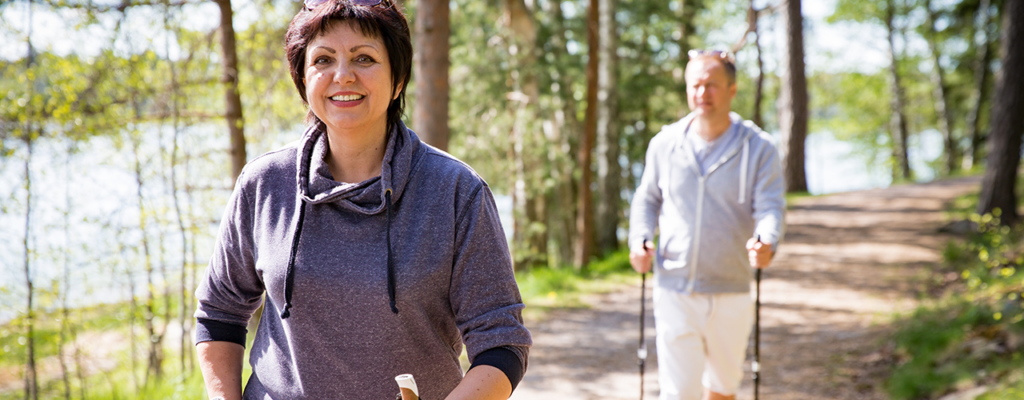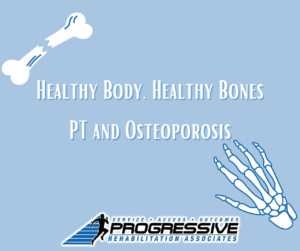Healthy Body, Healthy Bones

Exercising with Osteoporosis
If you’ve received a diagnosis of Osteoporosis or Osteopenia, you might know that movement and exercise are good for you but likely are wondering where to start or how to go about this safely. Exercising has many benefits to keep muscles and bones strong and improve balance that can help reduce the risk of falls. However, an exercise program for osteoporosis is best if it is designed specifically for you in order to achieve the most benefits.
What is Osteoporosis?
Bones are constantly regenerating throughout our life as new bone cells replace old cells. As we get older, our creation of new bone decreases. Osteoporosis occurs when loss of old bone is greater than the creation of new bone, leading the bones to become weak or brittle, increasing risk of fractures. The most common sites of fractures occur at hips, spine or wrists.

Precautions of Exercising with Osteoporosis:
If you’ve been diagnosed with osteoporosis, you may need to modify activities to avoid certain movements. Slow, controlled, and low impact movements are preferable to fast, high impact, or jarring activities. You will also likely want to avoid excessive bending or twisting motions, as it can increase pressure in potentially vulnerable areas of the spine. The great news is that even within these guidelines, there are many safe exercises that you can participate in that will be incredibly beneficial.
How Can Exercise Help and what type of exercises should I do?
Strength Exercise:
Strength exercise uses weights, bands or even your own body weight to create resistance to build muscle. It is particularly important to strengthen the muscles in your core and upper back that help support good posture and those in your legs that help with balance and movement. Your PT can help design a program that will be most beneficial for you.
Weight bearing Exercise:
Weight bearing exercise is any activity in standing, when your bones are supporting your weight, such as walking, dancing, elliptical, etc.. These types of activities provide appropriate stress to our bones, especially our legs and hips to actually help with bone growth and decrease bone loss.
Balance:
Balance activities are important to help us be more stable and decrease fall risk. This is especially important when walking on uneven surfaces, such as grass or gravel, stepping up onto a curb or step, walking up or down an incline or even walking in the dark.
A diagnosis of osteoporosis or osteopenia may at first, seem scary or daunting. However, a physical therapist can reassure you and guide you on knowing which movements are safe and which ones may need to be modified. Physical therapy will also work with you to be strong, healthy, and active and get you back to the activities you love!
